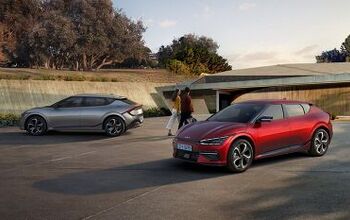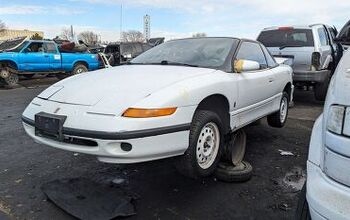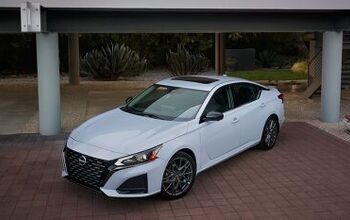Ford Recalls Many Super Duty Pickups, Cites Potential Driveshaft Issues

If any readers have a certain spec of Blue Oval workhorse in their fleet, they best pay attention to a recent recall from Ford. The company is recalling 223,628 Super Duty pickups to deal with an issue of faulty powertrain components. At fault are driveshafts that can apparently fracture under a specific set of conditions.
According to the NHTSA, certain F-250 and F-350 models equipped with gas engines and aluminum driveshafts can suffer problems with underbody thermal/acoustic insulators which may loosen over time and eventually make contact with the driveshaft. This could score or otherwise damage the shaft, potentially leading to failure due to localized overload condition caused by a reduction in material thickness. In other words, the insulators could gouge the rapidly spinning driveshaft and weaken it to the point of fracture. Inadequate adhesion of the insulators to the underbody is pointed to as a root cause.
The NHTSA spells out what could happen in such a scenario, saying a fractured driveshaft may result in “loss of motive power while driving” or unintended vehicle movement while the vehicle is in park if the parking brake is not applied. There could also be secondary damage to surrounding components if things hit the fan. It is also noted that a fractured driveshaft could contact the ground, a circumstance which may cause havoc while driving in addition to the loss of power to the driven rear wheels.
Ford’s Critical Concern Review Group apparently dug into this problem last December, conducting samples and studies to determine the specific problem. Ford is aware of 40 reports received between July 2017 and November 2021 alleging busted driveshafts potentially related to these faulty insulators. Ford is not aware of any reports of accidents or injuries related to this condition. New trucks currently rolling off the line do not have this issue thanks to a rolling change in December which replaced the offending insulator with an under-carpet thermal patch.
Owners of affected vehicles, which were not produced in a sequential group of VINs, will be notified by Ford in early April. Dealers are already in the know, so check with yer friendly service department if you don’t want to wait until just before Easter. So you’ve all ducks in a row, the NHTSA recall number is 22V-087 and the manufacturer recall number is 22S09.
[Image: Ford]

Matthew buys, sells, fixes, & races cars. As a human index of auto & auction knowledge, he is fond of making money and offering loud opinions.
More by Matthew Guy
Latest Car Reviews
Read moreLatest Product Reviews
Read moreRecent Comments
- OA5599 Been there, done that--Fordlandia.
- MaintenanceCosts I love urban condos, but the idea of sharing an association with 50 Aston owners makes me break out in hives.
- MaintenanceCosts My dad had a closely related, but much less cool, Corolla Liftback of the same vintage when I was born. Typical of a Toyota, it was the low-drama car in the household, compared to mom's backfire-prone and fussy RX-3 wagon. Both cars got sold when we moved overseas in 1981, but neither parent had the sense to buy something low-drama again for quite a few more years.
- MaintenanceCosts When they target one specific plant well outside of contract negotiation time, you know it's bad.Even if you distrust unions, ask yourself whether an individual whistleblower could have made any difference here without the union backing him up.
- FreedMike IIRC, weren't '70s Japanese cars prone to rust?


































Comments
Join the conversation
Surprising that the driver wouldn't hear the insulation grinding on the shaft if it's enough to start machining the tube. FWIW my 99 Sonoma has an aluminum driveshaft and it's the cleanest looking part on the underside of the chassis. Not sure what they use for a coating (if anything) but it looks like new. Good work, Am Axle Three Rivers! Gone but not forgotten.
Maybe Ford’s Critical Concern Review Group should look into the fuel in oil issue with the Ranger. Ford is denying they have a problem even when Ranger owners present independent lab analysis of the issue. My Ford dealer even refused to document my request for it to be looked into. They refused to do an oil analysis. And Ford Customer Service refused to do anything unless my engine blows up under warranty. There are over 150 pages with this discussed at https://www.ranger5g.com/forum/threads/fuel-in-oil.4803/page-150